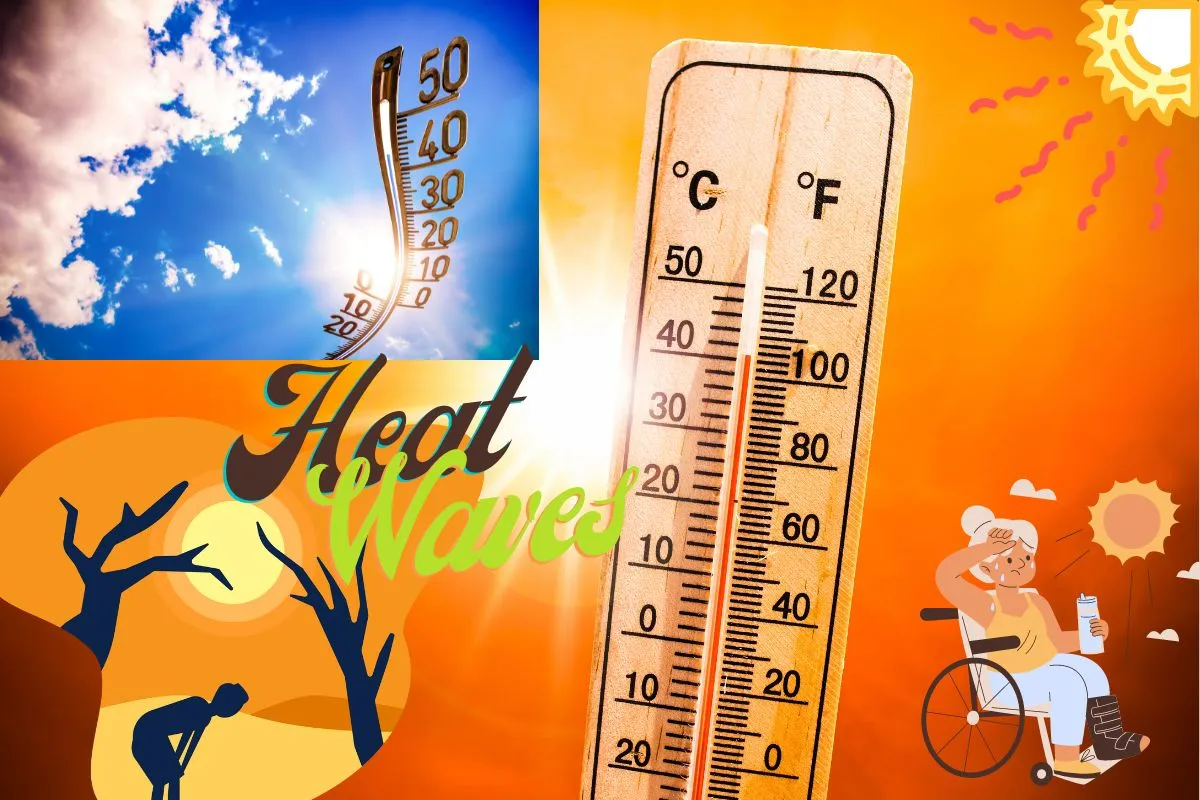Table of Contents
ToggleHeat Waves: Its Impact on Health, Environment, and Infrastructure
What is Heat Wave?
Let’s discover the causes, effects, and management strategies for heat waves. Learn about the impact of heat wave on health, the environment, and infrastructure, and find tips for coping and prevention.
Heat waves are prolonged periods of excessively hot weather, often accompanied by high humidity, which can have significant impacts on human health, the environment, and infrastructure. As temperatures rise globally due to climate change, the frequency, intensity, and duration of heat waves are increasing, making it crucial to understand their causes, effects, and how to manage them effectively.
Causes of Heat Wave
Natural Factors
One of the primary natural factors contributing to heat wave is the movement of air masses. When a high-pressure system stalls over a region for an extended period, it can lead to sinking air and the compression of atmospheric gases, resulting in increased temperatures. Additionally, factors such as geographic location, latitude, and elevation can influence the intensity of heat wave in certain areas.
Human Activities
Human activities, particularly the burning of fossil fuels and deforestation, contribute to the greenhouse effect, which traps heat in the Earth’s atmosphere and exacerbates global warming. Urbanization also plays a role, with cities experiencing higher temperatures due to the heat island effect, where buildings and pavement absorb and retain heat.
Effects of Heat Wave
Health Impact
Heat wave pose significant health risks, especially to vulnerable populations such as the elderly, children, and individuals with pre-existing health conditions. Heat-related illnesses, including heat exhaustion and heatstroke, can occur when the body’s ability to regulate temperature is overwhelmed by high heat and humidity. Additionally, heat waves can exacerbate respiratory and cardiovascular conditions, leading to increased hospitalizations and mortality rates.
Environmental Impact
Heat waves can have profound effects on the environment, including damage to ecosystems, wildlife, and agriculture. Extreme heat can cause drought conditions, leading to water shortages and crop failures. Heat stress can also impact wildlife populations, particularly those already at risk due to habitat loss and fragmentation.
Examples of Notable Heat Wave
Historical Heat Waves
Throughout history, there have been numerous notable heat wave, including the European heat wave of 2003, which resulted in tens of thousands of heat-related deaths. Other historic heat wave include the Dust Bowl heat wave in the United States during the 1930s and the heat wave in Russia in 2010, which led to widespread wildfires and crop failures.
Recent Heat Waves
In recent years, heat waves have become more frequent and severe, affecting regions around the world. Examples include the record-breaking heat wave in Western North America in 2021, which resulted in unprecedented temperatures and wildfires, and the heat wave in Europe in 2019, which shattered temperature records in several countries. Even in the starting days of summer, India is facing tremendous heat waves through out the north regions and western regions.

Heat Wave Management and Prevention
Effective management and prevention strategies are essential for mitigating the impacts of heat waves and protecting public health and safety.
Public Health Measures
Public health agencies often issue heat advisories and warnings to inform the public about the risks associated with heat waves and provide guidance on staying safe during extreme heat events. These measures may include opening cooling centers, distributing water and fans to vulnerable populations, and implementing outreach programs to check on elderly or isolated individuals.
Urban Planning Strategies
Urban planning plays a crucial role in reducing the urban heat island effect and increasing resilience to heat waves. Strategies such as increasing green spaces, planting trees, and implementing cool roof initiatives can help lower temperatures in urban areas and improve overall comfort and air quality.
Tips for Coping with Heat Wave
During heat waves, it’s essential to take precautions to protect yourself and others from heat-related illnesses.
- Stay Hydrated: Drink plenty of water throughout the day to stay hydrated and avoid sugary or alcoholic beverages, which can dehydrate the body.
- Keep Cool: Seek out air-conditioned spaces or use fans to stay cool indoors. Wear lightweight, light-colored clothing and take cool showers or baths to lower body temperature.
- Limit Outdoor Activities: Minimize outdoor activities during the hottest parts of the day, and if you must be outside, take frequent breaks in the shade and avoid strenuous exercise.
The Link Between Climate Change and Heat Waves
Scientific research has shown a clear link between climate change and the increasing frequency and severity of heat waves. As greenhouse gas emissions continue to rise, global temperatures are projected to increase, leading to more frequent and intense heat waves in the future.
Conclusion
Heat waves are a growing concern due to their adverse effects on human health, the environment, and infrastructure. By understanding the causes of heat wave, implementing effective management and prevention strategies, and taking individual precautions, we can reduce the risks associated with extreme heat events and build resilience to climate change.
Heat waves are prolonged periods of excessively hot weather, often lasting several days or weeks, whereas normal hot weather may be shorter in duration and less intense.
Symptoms of heat-related illnesses include dizziness, nausea, headache, rapid heartbeat, and confusion. If you or someone you know experiences these symptoms, seek medical attention immediately.
Yes, vulnerable populations such as the elderly, children, individuals with pre-existing health conditions, and outdoor workers are at higher risk of heat-related illnesses and complications.
Communities can prepare for heat waves by developing heat emergency response plans, educating the public about heat safety, and implementing measures to protect vulnerable populations, such as opening cooling centers and providing access to water and shade.
Climate change contributes to the increased frequency and intensity of heat waves by raising global temperatures and altering weather patterns. Reducing greenhouse gas emissions and mitigating climate change are essential for preventing more severe heat wave events in the future.
